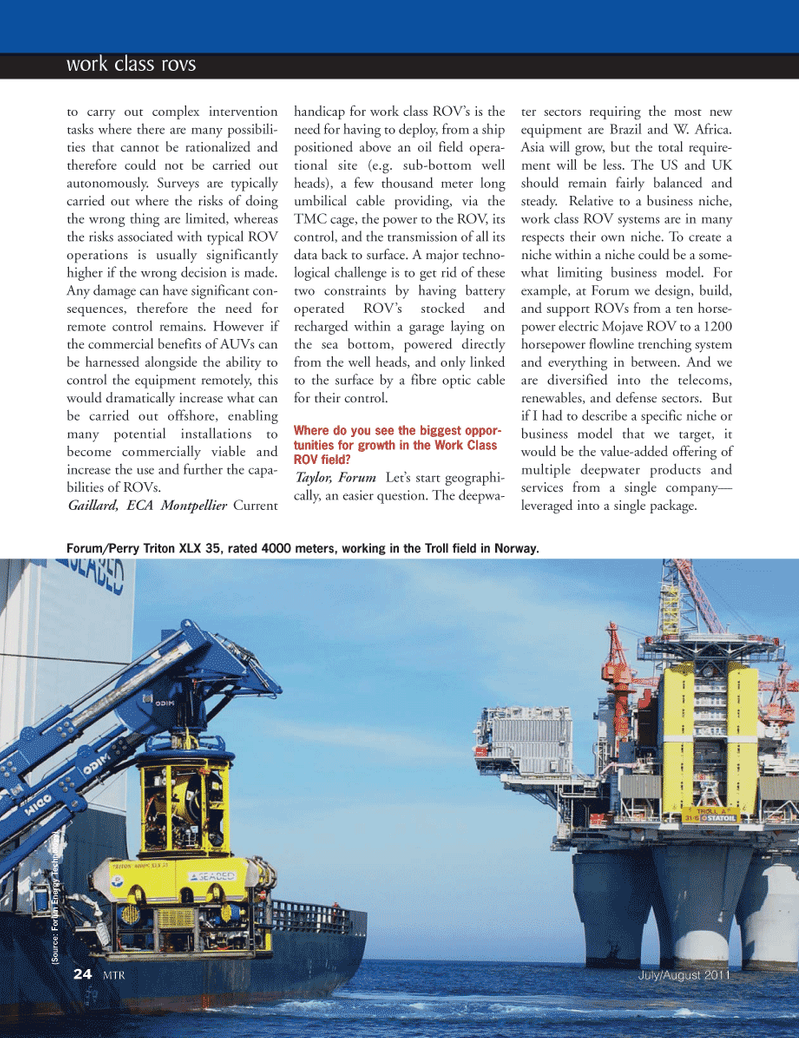
Page 24: of Marine Technology Magazine (July 2011)
MTR100 Edition
Read this page in Pdf, Flash or Html5 edition of July 2011 Marine Technology Magazine
to carry out complex intervention tasks where there are many possibili- ties that cannot be rationalized and therefore could not be carried out autonomously. Surveys are typically carried out where the risks of doing the wrong thing are limited, whereas the risks associated with typical ROV operations is usually significantlyhigher if the wrong decision is made. Any damage can have significant con- sequences, therefore the need for remote control remains. However if the commercial benefits of AUVs can be harnessed alongside the ability tocontrol the equipment remotely, this would dramatically increase what can be carried out offshore, enabling many potential installations tobecome commercially viable and increase the use and further the capa- bilities of ROVs. Gaillard, ECA Montpellier Current handicap for work class ROVs is the need for having to deploy, from a ship positioned above an oil field opera- tional site (e.g. sub-bottom well heads), a few thousand meter long umbilical cable providing, via the TMC cage, the power to the ROV, its control, and the transmission of all its data back to surface. A major techno- logical challenge is to get rid of thesetwo constraints by having battery operated ROVs stocked and recharged within a garage laying on the sea bottom, powered directly from the well heads, and only linked to the surface by a fibre optic cable for their control. Where do you see the biggest oppor- tunities for growth in the Work Class ROV field?Taylor, Forum Lets start geographi- cally, an easier question. The deepwa- ter sectors requiring the most new equipment are Brazil and W. Africa. Asia will grow, but the total require- ment will be less. The US and UK should remain fairly balanced and steady. Relative to a business niche, work class ROV systems are in many respects their own niche. To create a niche within a niche could be a some-what limiting business model. For example, at Forum we design, build, and support ROVs from a ten horse- power electric Mojave ROV to a 1200 horsepower flowline trenching system and everything in between. And we are diversified into the telecoms, renewables, and defense sectors. But if I had to describe a specific niche orbusiness model that we target, it would be the value-added offering of multiple deepwater products and services from a single company? leveraged into a single package. 24MTRJuly/August 2011work class rovs Forum/Perry Triton XLX 35, rated 4000 meters, working in the Troll field in Norway. (Source: Forum Energy Technology)

 23
23

 25
25
